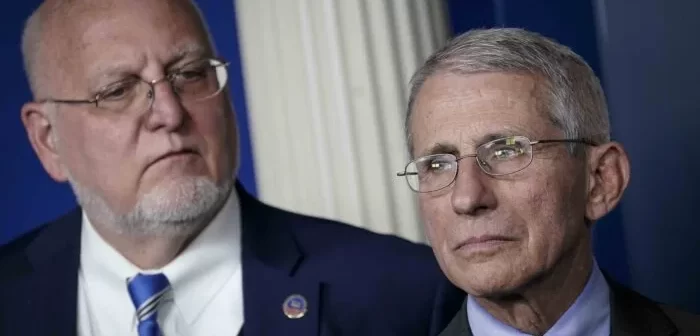Early in the Covid pandemic, several studies of busing, restaurants, and choir practices laid the foundations for the restrictions that followed. But now that the epidemiological fog is clearing, a critical analysis of these early, influential studies increasingly shows that government policies have been built on poor science.
Reports today highlight a published study of choir practice in Skagit County, Washington that led to an 18-month indoor singing ban. However, in further analysis, the infection was not caused by a single overexpression but reflected high infection rates in the community. The choir’s practice has also been used to support the theory of aerosol transmission of the virus.
We have conducted a systematic review to investigate whether SARS-CoV-2 can be transmitted via the airborne route (a loose term that includes a range of compounds from droplets to fine aerosols). We immediately ran into problems with the quality of the evidence. One of the included studies was the choir study, which we considered to be of poor quality and uninformative, as it did not perform air sampling for SARS-CoV-2, did not mention seating arrangements or movements of people, and, most importantly, did not perform air sampling. Do not culture the virus.
This is one of many studies that have contributed to the bad science of COVID. Another example is a highly cited May 2020 article that reported a case of asymptomatic spread that was later found to be from a symptomatic person. Information that came to light after publication indicated that the suspected case had symptoms consistent with Covid infection but suppressed them with various treatments to attend key business meetings. It is worth noting that the famous journal that published the misleading research still needs to correct the text. However, early reports of asymptomatic transmission based on faulty sites set the course for mass testing.
Experts used early, poor-quality studies to fuel public craze in support of the restrictions. Exaggerating case numbers, misunderstandings of those who were truly at risk, and sweeping statements about mode of transmission and models that attempted to peek into the future laid the groundwork for suppression of civil liberties and significant repercussions that will now require communities to pay the price for decades to come.
However, those who stuck their heads over the bar to point out the flaws in these early studies and the weaknesses in the policies that followed were repressed, censored, and vilified.
Communicating health evidence requires describing weaknesses in study design that undermine its findings. Unfortunately, most of the early studies were so poor that they did not contribute to understanding of virus transmission and, in some cases, misled decision-makers.
Too often, study findings have been used by experts who immersed themselves in the pandemic — who have now receded — to support positions of certainty. This dogma led to the breakdown of constructive discussion. As a result, the destructive politics went largely unchallenged.
So we have another victim of the covid-19 pandemic: science. This is based on a free and civilized discussion and recognition of the existence and role of uncertainty – the vital components of its progress. Following the “science” was not a powerful force for making effective policies when so much of the “science” was flawed.
Until now, little attention has been paid to being critical—an essential part of the scientific process. The pandemic has tarnished the public’s trust in science and scientists. It is not clear if he will recover. In the meantime, poor decision-making must be paid for.
Carl Heneghan is a Professor of Evidence-Based Medicine at the University of Oxford and Director of the Center for Evidence-Based Medicine.
Tom Jefferson is a Senior Associate Professor in the Department of Continuing Education, the University of Oxford.
Source: Telegraph

